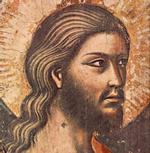Catholic Prayer: Roman Ritual: Rogation Days Procession
Description:
Taken from 1964 Roman Ritual translated by Philip T. Weller.
Prayer:
PROCESSION ON THE FEAST OF ST. MARK THE EVANGELIST AND ON THE THREE ROGATION DAYS BEFORE ASCENSION*
* The local Ordinary may transfer the celebration of the Rogation days to three consecutive days that are more convenient.
1. The clergy and people assemble in church at the appointed hour of the morning, where they kneel and devote a few moments to humble and contrite prayer. The celebrant and his ministers are vested in amice, alb, and cincture. The celebrant wears also a stole and cope; or at least a surplice and purple stole. This same color is always used in the other processions, except on Corpus Christi, on solemn feast days, or for the procession of thanksgiving, on which days the color proper to the occurring solemnity is used. The rest of the priests and clerics wear a surplice. All stand as the following antiphon is sung (the music for this is given in the music supplement):
All: Ant. Rise up, O Lord, and help us, * and deliver us for your name's sake.
P: We have heard, O God, with our own ears * the things which our fathers told us.
All: Glory be to the Father, and to the Son, * and to the Holy Spirit.
P: As it was in the beginning, is now, and ever shall be, * world without end. Amen.
All: Ant.: Rise up, O Lord, and help us, * and deliver us for your name's sake.
2. Then all kneel again, and two clerics who are kneeling at the altar begin the chant of the Litany of the Saints.
3. As soon as the invocation Holy Mary has been sung, all rise, and continuing the litany march out in the proper order. The cross is carried at the head of the procession; then come the faithful followed by the clergy, and last of all the priest, vested as described above. He is accompanied by his ministers who are clothed in sacred vestments, as circumstances dictate.
4. If the procession takes a long time the litany can be repeated, or else after the last Kyrie of the litany (excluding the orations), some of the penitential or gradual psalms can be added. However, hymns or sacred songs of a joyous character should not be sung during the Rogation processions or any procession which has a penitential purpose.
5. If one or several churches are visited along the way, then, having entered the church, the litany or the psalms are interrupted, and the antiphon of the patron of that church is sung, along with the versicle and oration. On leaving the church the chanting of the litany or psalms is resumed, and the procession continues in the same order as before until it has reentered the church from which it started. Here the service ends with the final prayers and orations prescribed for the conclusion of the Litany of the Saints.
6. Should it happen that the feast of St. Mark the Evangelist is transferred to another day, the procession is held nevertheless, unless the feast falls on Easter Sunday or Monday, in which case the procession is transferred to Easter Tuesday.
Prayer Source: Roman Ritual: Volume III, The Blessings by Philip T. Weller, The Bruce Publishing Company, 1952





